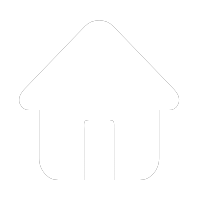Blog
Smart Modular Living: AI + IoT Leading the Future of Modular Homes in Australia

Table of Contents
-
Introduction
-
What Defines a Smart Modular Home?
-
Why AI + IoT is Transforming Modular Living
-
Core Technological Innovations
-
Benefits of Smart Modular Housing
-
Real-World Applications and Use Cases
-
Market Trends and Business Opportunities
-
Regulatory Support and Policy Evolution
-
Challenges and Barriers to Adoption
-
Future Outlook for Smart Modular Living
-
Conclusion
-
FAQ
-
Marketing Highlights
1. Introduction
Australia’s housing market is undergoing significant change. High property prices, urban density, and the push for sustainable solutions have driven the rise of modular and container homes. But now, a second revolution is emerging: the integration of smart technology.
By combining AI-driven predictive systems and IoT-enabled controls, these homes are not just modular — they are becoming living, learning ecosystems. From automatic climate control to real-time energy optimization, the future of housing is not only sustainable but also intelligent.
2. What Defines a Smart Modular Home?
A smart modular home is a prefabricated or container-based dwelling equipped with AI algorithms and IoT sensors that allow seamless management of key systems such as:
-
Energy consumption and optimization
-
Lighting and climate control
-
Security and safety monitoring
-
Predictive maintenance and automated alerts
Unlike traditional static homes, smart modular units are adaptable and scalable, perfect for both urban dwellers and remote lifestyle enthusiasts.
3. Why AI + IoT is Transforming Modular Living
Demand for Efficiency
With energy costs rising and housing affordability under pressure, AI systems can analyze usage patterns to minimize waste and lower monthly bills.
Personalized Comfort
AI adapts to occupant behavior, ensuring optimal temperature, lighting, and air quality without manual intervention.
Sustainability
IoT-connected devices monitor water, power, and resource use, ensuring minimal environmental impact.
Market Differentiation
Developers who integrate smart systems can offer a premium product, setting themselves apart in a competitive market.
4. Core Technological Innovations
AI Predictive Control
AI analyzes data from occupant patterns, weather forecasts, and utility pricing to adjust operations automatically.
For example:
-
Reducing air conditioning when the home is empty.
-
Running high-power appliances during off-peak energy hours.
IoT Device Integration
IoT sensors communicate across systems, creating a unified platform that can:
-
Monitor energy usage room by room.
-
Control lighting, security cameras, and smart locks remotely.
-
Trigger maintenance alerts for HVAC or solar systems.
Cloud-Driven Data Insights
Smart modular homes leverage cloud-based analytics to predict wear and tear, optimize performance, and update software for new features — ensuring the system evolves with the resident’s needs.
Voice and App-Based Control
Integration with platforms like Google Home, Alexa, or proprietary apps enables homeowners to monitor and adjust their homes from anywhere, anytime.
5. Benefits of Smart Modular Housing
1. Energy Efficiency
Smart systems reduce energy consumption by up to 30%, significantly lowering household bills while promoting sustainability.
2. Comfort and Convenience
AI systems deliver personalized living environments that adapt automatically — no manual adjustments needed.
3. Cost-Effective for Developers
Developers benefit from reduced operational costs, streamlined maintenance, and enhanced property value.
4. Future-Proof Design
Smart modules are upgradable with software and hardware updates, extending the lifespan and value of the property.
6. Real-World Applications and Use Cases
Urban Apartments
In dense cities like Sydney and Melbourne, smart modular units are helping to maximize efficiency in limited spaces.
Remote Living
For off-grid homes in regional Australia, AI + IoT systems combined with solar and battery storage allow for complete independence from utilities.
Emergency and Temporary Housing
AI-powered energy systems enable rapid-deployment modular units that remain efficient and self-sustaining during natural disasters or crises.
Luxury Modular Retreats
High-end developments are integrating IoT lighting, sound, and climate systems, offering resort-level experiences in compact, eco-friendly packages.
7. Market Trends and Business Opportunities
The global modular housing market is growing rapidly, and Australia is following suit. By 2030, smart modular homes are projected to represent a multi-billion-dollar industry, driven by:
-
Government policies promoting sustainability
-
Growing awareness of smart technologies
-
Developers seeking competitive differentiation
Opportunities include:
-
Smart-ready prefab kits
-
Subscription-based AI and IoT upgrades
-
Data-driven analytics services for maintenance and efficiency
8. Regulatory Support and Policy Evolution
The National Construction Code (NCC) is beginning to adapt to support intelligent modular housing, with updates focused on:
-
Energy efficiency standards
-
Smart system safety compliance
-
Integration of renewable power systems
State-level incentives, such as rebates for solar and battery installations, further boost adoption rates.
9. Challenges and Barriers to Adoption
Despite its promise, smart modular living faces certain obstacles:
-
Upfront Costs: AI systems and IoT devices can add 10–20% to construction costs.
-
Technical Literacy: Homeowners need education on managing smart systems effectively.
-
Connectivity in Remote Areas: Some rural regions lack the reliable internet needed for full functionality.
10. Future Outlook for Smart Modular Living
Looking ahead, the market will continue to evolve with key innovations:
-
AI-driven energy sharing between modular communities.
-
Blockchain-enabled utility trading for off-grid neighborhoods.
-
Advanced predictive maintenance reducing downtime and costs.
-
Integration of EV (electric vehicle) charging systems into modular housing ecosystems.
By 2035, AI-powered modular communities could become standard, blending affordability, intelligence, and environmental responsibility.
11. Conclusion
The integration of AI and IoT with modular housing is redefining modern living in Australia. These homes are no longer just structures — they are adaptive, efficient, and deeply personalized ecosystems designed for comfort, sustainability, and innovation.
For developers, embracing this trend means competitive advantage. For homeowners, it represents a smarter, greener, and more convenient way of life.
12. FAQ
Q1: How much does a smart modular home cost?
Costs vary, but adding AI and IoT systems typically increases pricing by 10–20% compared to traditional modular builds.
Q2: Can smart systems be retrofitted to existing modular homes?
Yes. Most AI and IoT components are modular and upgradeable.
Q3: Do these systems require internet access?
Yes, although offline functionality for essential controls is often available.
Q4: What’s the average installation time?
Most smart modular homes are operational within 6–12 weeks, depending on customization.
Q5: Are there government incentives for smart modular homes?
Yes. Rebates and tax benefits often apply for integrating renewable energy systems.

















